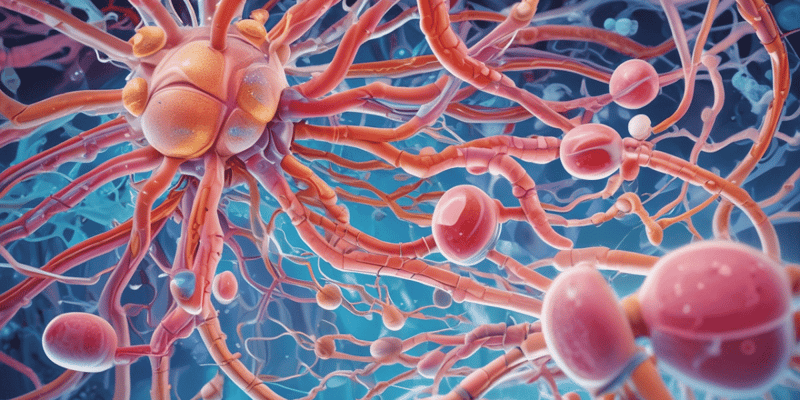10 Questions
Which type of analgesics relieve pain by acting centrally without impairing consciousness or other sensations?
Non-Steroidal Anti-inflammatory drugs
Which enzyme do Non-Steroidal Anti-inflammatory drugs inhibit to prevent prostaglandins synthesis?
Cyclo-Oxygenase (COX)
Which type of analgesics produce euphoria and are addictive?
Opioid Analgesic drugs
Which Cyclo-Oxygenase enzyme is responsible for forming protective prostaglandins in the gastrointestinal tract and kidney?
COX-1
Which enzyme is responsible for releasing Arachidonic Acid during prostaglandin synthesis?
Phospholipase A2
Which type of analgesics act subcortically on the thalamus to relieve low-intensity pain?
NSAIDs
Where is COX-2 enzyme mainly inducible?
In inflammation or injury sites
What is the main function of prostaglandins produced by Cyclo-Oxygenase enzymes?
Induce pain, fever, and inflammation
Which type of analgesics contract the uterus and can lead to dysmenorrhea?
NSAIDs
Which enzyme is mainly responsible for synthesizing protective prostaglandins in peripheral tissues like the gastrointestinal tract?
COX-1
Study Notes
Central Analgesics
- Relieve pain by central action without impairing consciousness or other sensations
- Classified into two main categories: Non-Steroidal Anti-inflammatory (NSAIDs) and Opioid (Narcotic) Analgesic drugs
Non-Steroidal Anti-inflammatory (NSAIDs) Analgesic Drugs
- Relieve low-intensity pain (e.g., headache, neuralgia, myalgia)
- Act on the subcortical thalamus region
- Do not produce euphoria or drowsiness
- Non-addictive
Opioid (Narcotic) Analgesic Drugs
- Relieve any type of pain (except itching)
- Act on both cortical and subcortical regions
- Produce euphoria and addiction
Peripheral Analgesics
- Include physical protectives, local and surface anesthetics, and counter-irritants
Non-Steroidal Anti-inflammatory (NSAIDs) Drugs
- Inhibit Cyclo-Oxygenase (COX) enzyme, which inhibits Prostaglandins synthesis
Cyclo-Oxygenase Enzymes
- COX-1:
- Mainly constitutive (present normally in tissues)
- Regulates physiological functions
- Responsible for forming protective Prostaglandins in the gastrointestinal tract and kidney (peripherally)
- COX-2:
- Inducible in inflammation or injury
- Constitutive in endothelium and kidney (peripherally)
- COX-3:
- Newly discovered (under investigation)
- Mainly found in the brain (centrally)
Prostaglandins Synthesis and Functions
- Stimuli activate Phospholipase A2, releasing Arachidonic Acid
- Cyclo-Oxygenase Enzyme "COX" (90%) or Lipo-Oxygenase Enzyme "LOX" (10%) convert Arachidonic Acid to Prostaglandins
- Prostaglandins:
- Induce pain, fever, and inflammation
- Contract uterus, causing dysmenorrhea (during menstruation in non-pregnant women)
Test your knowledge on the classification of central analgesics which include non-steroidal anti-inflammatory drugs and opioid analgesic drugs. Learn about their specific actions, effects, and addictive properties.
Make Your Own Quizzes and Flashcards
Convert your notes into interactive study material.
Get started for free



